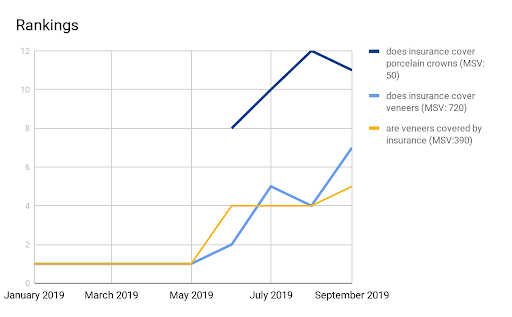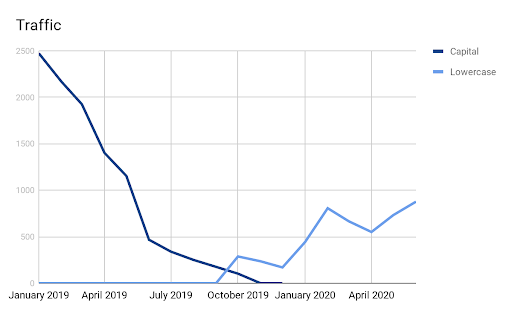Technical SEO Case Study: Duplicate URLs Are a Silent SEO Killer
When referring to SEO we tend to think about content, but in this post we showcase why technical issues can prevent a page from ranking as well. In this case study, we saw rankings make dramatic changes which lead to increased performance.
In the SEO world, it’s no secret that URLs have a major impact on SEO. However, it’s often more related to taxonomy or having the right keywords in the URL. It’s less often the topic of duplicate URLs comes up in a conversation. This is because it’s not obvious when sites have this problem, let alone diagnose the problem. In this case study from one of our doctors, we cover that very topic.
In this example, one of our clients was ranking really well for a few keywords with many on page one — the most important place to be in SEO. However, throughout the 2019 year, those rankings were suddenly falling (going up on the charts) for some reason. Upon research, it was discovered the top-ranking page was a URL with capitalized words. Normally, this wouldn’t be a big problem as you certainly can have capital letters in the URL. The ultimate problem was because the same page had a lowercase version of the same URL. Even though they are essentially the same URL, Google treats capitalization and lowercase as separate pages, which essentially means duplicate content. When there’s duplicate content, Google gets confused on what page to index, resulting in lower performance. It’s also likely these results were even more dramatic, thanks to big algorithm updates that heavily impacted healthcare-related sites throughout the 2019 year.

A ranking decrease of only a few spots may not seem like a lot, but it’s extremely significant in the SEO world as there are huge drop-offs in the amount of traffic a website gets based on rankings. Depending on what study or model used, the top spot can generate 30% of all clicks for a given search with the top three generating almost 60%. The amount of traffic drops considerably after the top results, and if you’re on page two, you’re not likely to be generating any significant amounts of traffic.
In the previous chart and this one, there is a direct correlation with the traffic numbers and rankings during the same timeframe. There were big drops throughout the 2019 year to the point of almost generating no traffic.

In the fall of 2019, we corrected the problem by automatically redirecting the uppercase URL to the lowercase version to remove instances of duplicate content. This way, Google knows there is only one URL and avoids any confusion.

After a sharp increase in rankings (drop on chart) in October, things appeared to be getting worse in the final months of 2019. This could be a fluke because of a big algorithm change in the fall, resulting in rankings volatility. It’s rare to see quick changes in rankings so it makes sense the trend continued throughout the rest of 2019. A few months after this duplicate content was removed, our rankings returned to or near the previous highs.
The traffic chart also correlates with the ranking as well, showing a little bit of a spike in October before gradually returning to a big uptrend. Google needed time to update its records to reflect that there’s only one URL instead of two, which is why both pages generated traffic in October.

While the amount of traffic isn’t exactly what it was before, it’s still much higher and on an uptrend. With other ongoing trends and algorithm updates, it’s possible the page may never receive the same amount of traffic it once did. However, the website is well on its way to capitalizing on as much traffic as possible.

